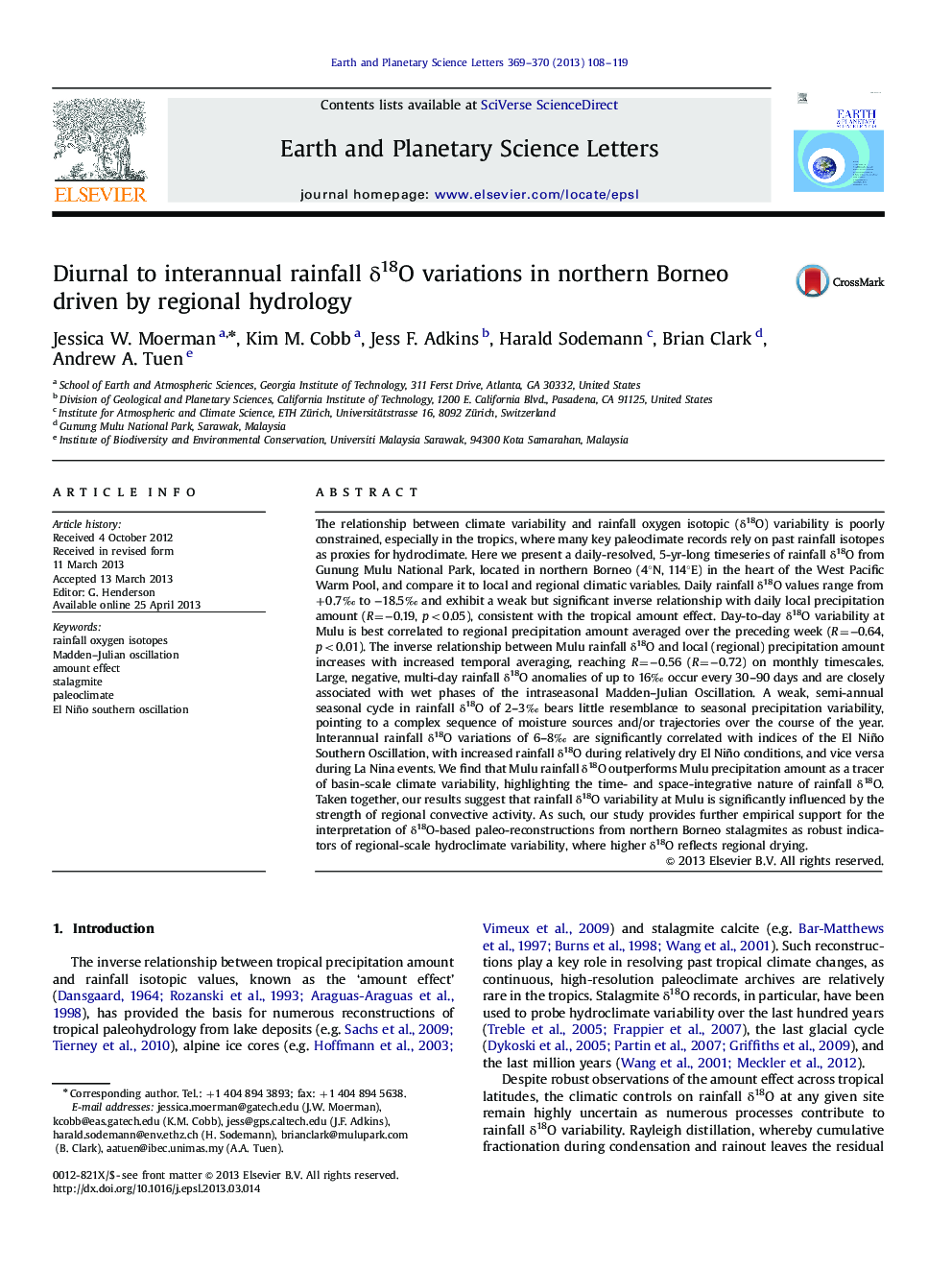| کد مقاله | کد نشریه | سال انتشار | مقاله انگلیسی | نسخه تمام متن |
|---|---|---|---|---|
| 4677097 | 1634784 | 2013 | 12 صفحه PDF | دانلود رایگان |

• Different dynamical regimes regulate rainfall δ18O variability at different timescales.
• “Local” amount effect mechanisms regulate Mulu rainfall δ18O across a single storm.
• “Regional” amount effect processes drive diurnal to interannual rainfall δ18O variability.
• Daily rainfall δ18O best reflects regional precipitation integrated over the previous week.
• Monthly rainfall δ18O variability in northern Borneo significantly impacted by ENSO.
The relationship between climate variability and rainfall oxygen isotopic (δ18O) variability is poorly constrained, especially in the tropics, where many key paleoclimate records rely on past rainfall isotopes as proxies for hydroclimate. Here we present a daily-resolved, 5-yr-long timeseries of rainfall δ18O from Gunung Mulu National Park, located in northern Borneo (4°N, 114°E) in the heart of the West Pacific Warm Pool, and compare it to local and regional climatic variables. Daily rainfall δ18O values range from +0.7‰ to −18.5‰ and exhibit a weak but significant inverse relationship with daily local precipitation amount (R=−0.19, p<0.05), consistent with the tropical amount effect. Day-to-day δ18O variability at Mulu is best correlated to regional precipitation amount averaged over the preceding week (R=−0.64, p<0.01). The inverse relationship between Mulu rainfall δ18O and local (regional) precipitation amount increases with increased temporal averaging, reaching R=−0.56 (R=−0.72) on monthly timescales. Large, negative, multi-day rainfall δ18O anomalies of up to 16‰ occur every 30–90 days and are closely associated with wet phases of the intraseasonal Madden–Julian Oscillation. A weak, semi-annual seasonal cycle in rainfall δ18O of 2–3‰ bears little resemblance to seasonal precipitation variability, pointing to a complex sequence of moisture sources and/or trajectories over the course of the year. Interannual rainfall δ18O variations of 6–8‰ are significantly correlated with indices of the El Niño Southern Oscillation, with increased rainfall δ18O during relatively dry El Niño conditions, and vice versa during La Nina events. We find that Mulu rainfall δ18O outperforms Mulu precipitation amount as a tracer of basin-scale climate variability, highlighting the time- and space-integrative nature of rainfall δ18O. Taken together, our results suggest that rainfall δ18O variability at Mulu is significantly influenced by the strength of regional convective activity. As such, our study provides further empirical support for the interpretation of δ18O-based paleo-reconstructions from northern Borneo stalagmites as robust indicators of regional-scale hydroclimate variability, where higher δ18O reflects regional drying.
Journal: Earth and Planetary Science Letters - Volumes 369–370, May 2013, Pages 108–119